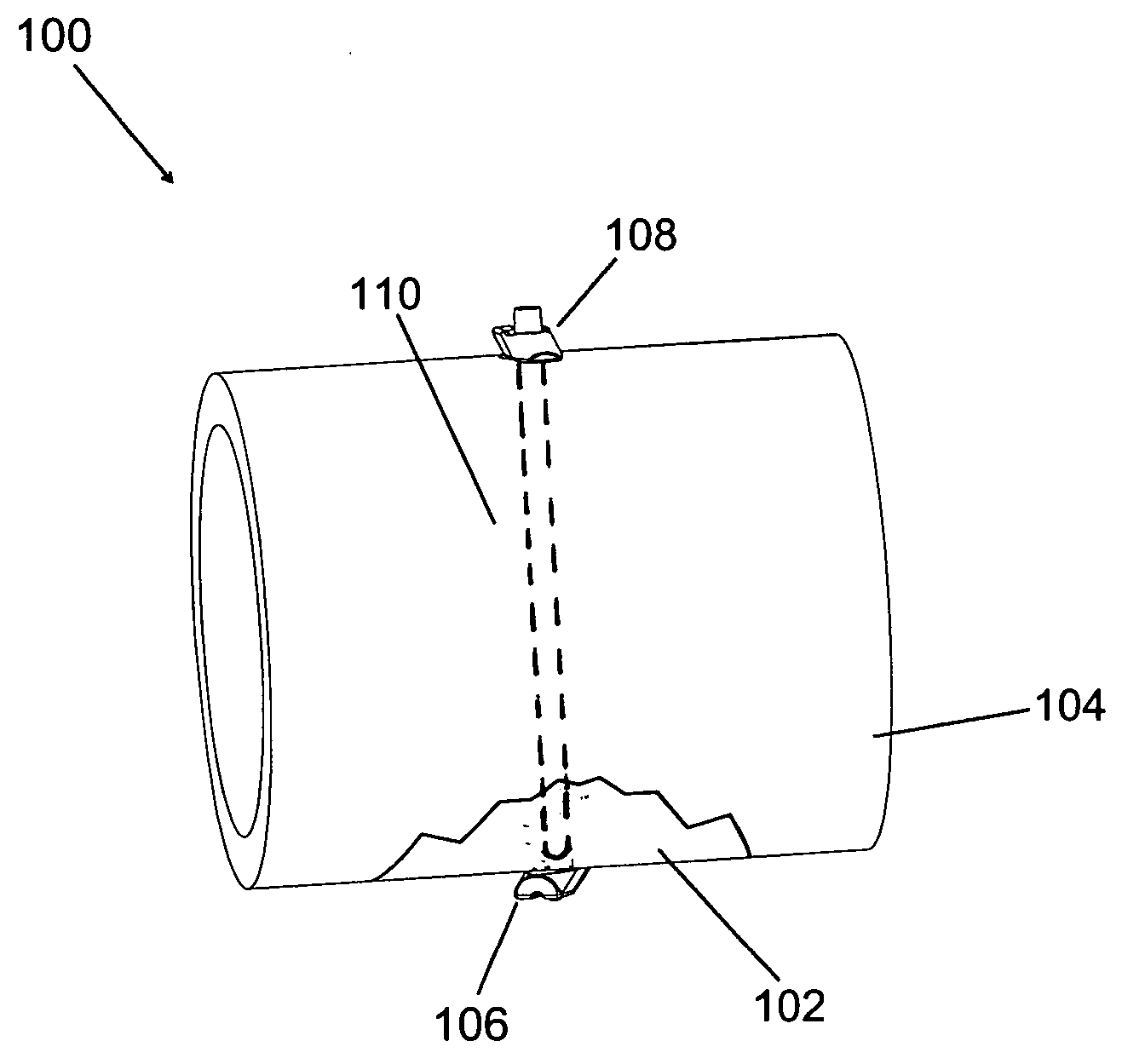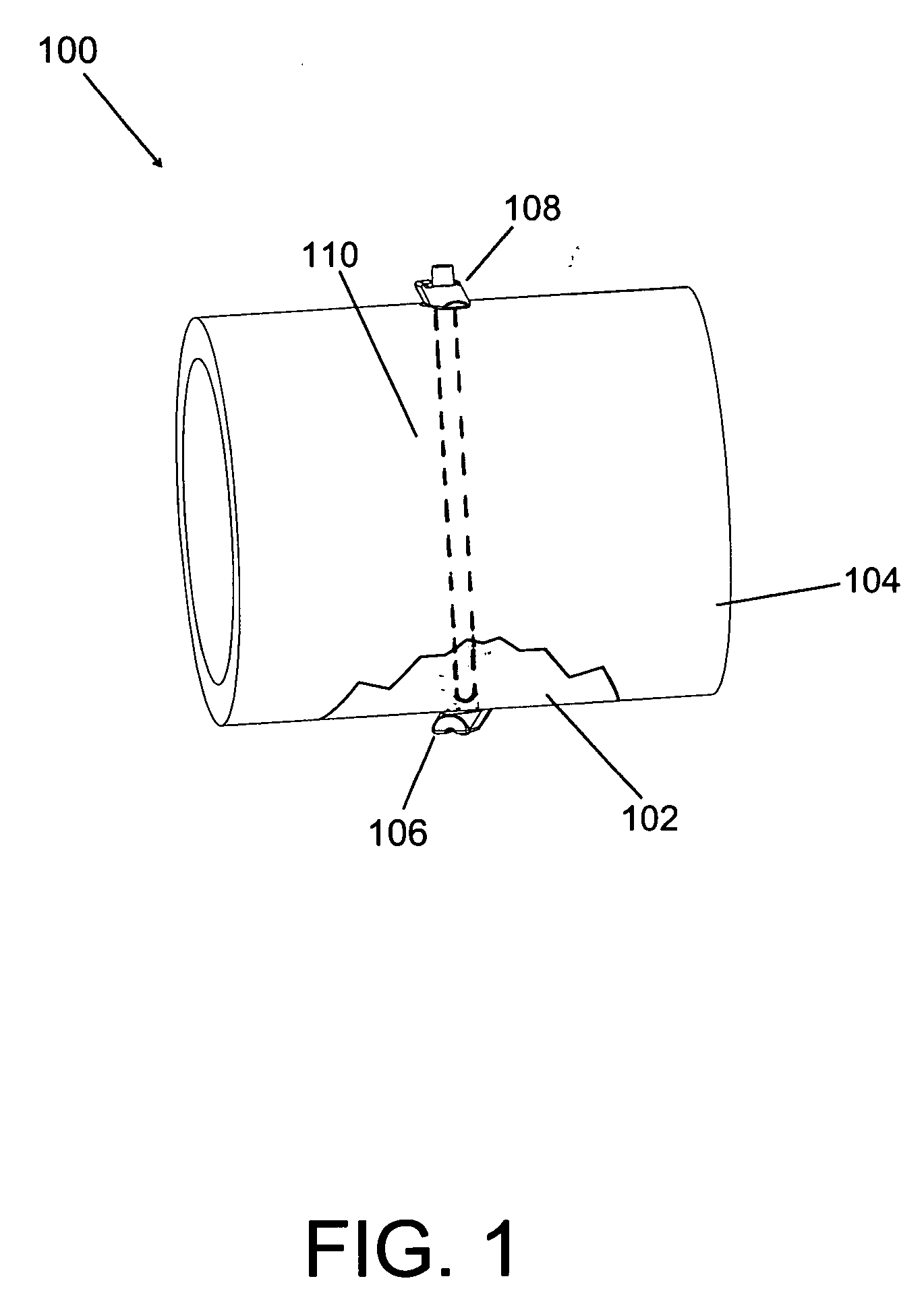Tissue fixation system and method
a tissue fixation and tissue technology, applied in the direction of prosthesis, ligaments, surgical forceps, etc., can solve the problems of inability to percutaneously perform surgery, bone screws may lose their grip and strip out of bone, side of cortex fixation, etc., to achieve the effect of maintaining tension in the elongated fastening member
- Summary
- Abstract
- Description
- Claims
- Application Information
AI Technical Summary
Benefits of technology
Problems solved by technology
Method used
Image
Examples
Embodiment Construction
[0061] The present invention provides a tissue fixation system for dynamic and rigid fixation of tissue. The system can be utilized for the fixation and stabilization of body tissue, including soft tissue to soft tissue, soft tissue to bone, and bone to bone. The surgical system can additionally be used to affix implants and grafts to body tissue. The system can access and treat fractured, incised or torn tissue, or the like, from one access area (i.e., from only one opening to the tissue to be fastened) instead of requiring two or more openings. That is, the system is a linear fixation system that can be used with a single, small incision or portal in the skin or other soft tissue to gain access to the fractured bone. The fixation system may be an all-in-one system, packaged as a system kit, for creating a passage in tissue, positioning fasteners, and tensioning an elongate fastening member, like a suture, thread, cable, wire, rod, or pin. The individual components of the system ca...
PUM
| Property | Measurement | Unit |
|---|---|---|
| tension | aaaaa | aaaaa |
| adhesive | aaaaa | aaaaa |
| force | aaaaa | aaaaa |
Abstract
Description
Claims
Application Information
 Login to View More
Login to View More - R&D
- Intellectual Property
- Life Sciences
- Materials
- Tech Scout
- Unparalleled Data Quality
- Higher Quality Content
- 60% Fewer Hallucinations
Browse by: Latest US Patents, China's latest patents, Technical Efficacy Thesaurus, Application Domain, Technology Topic, Popular Technical Reports.
© 2025 PatSnap. All rights reserved.Legal|Privacy policy|Modern Slavery Act Transparency Statement|Sitemap|About US| Contact US: help@patsnap.com



